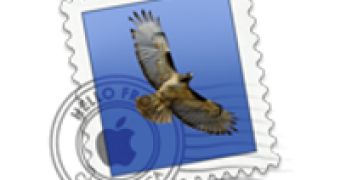Following the release of Mac OS X 10.5.6, numerous Leopard users started reporting issues with the operating system's Mail application. Apple has acknowledged those issues and has released a patch that should make Mail.app more stable. The company has also posted documentation on the problems, which includes instructions on how to apply the update and get rid of the bugs. Read on for the full scoop.
As usual, Apple uses the Support section of its website to offer Mac users information about the Mail Update. According to the company, “This update addresses stability issues with Mail.” The note offers additional information on the update, like why it was necessary. “After updating to Mac OS X 10.5.6, Mail may unexpectedly quit,” Apple has learned. “This can be caused by using a copy of Mail that wasn't updated properly (you may need to install the Mail Update),” the company explains.
In a more detailed tech note, Apple reveals that the issues can also be caused “by having outdated third-party Mail plugins installed,” pointing out that installing the Mac OS X 10.5.6 Combo Update may be necessary for some. However, to make Mail.app work well for everyone, the company offers the following resolutions: Check the Mail version; reinstall the Mac OS X 10.5.6 Combo Update, if necessary
Open Mail, open choose About Mail from the Mail menu. The Mail.app version should be "3.5 (930.3)" with Mac OS X 10.5.6 installed. If it is exactly "3.5 (930.3)," go to the "Update or remove plugins" section below.
Quit Mail.
Right-click or Control-click the Mail icon that you use to open Mail, then choose "Show in Finder" from the contextual menu (for example, Control-click the Mail icon in the Dock).
Right-click or Control-click the Mail.app icon and select a color label, such as red or green.
Press Command-F.
In the Spotlight window, click "Macintosh HD" (or whatever the name of your startup volume is) in the Search: line.
Search on "Mail.app."
If there are other copies of Mail found besides the one you use (other than the one you labelled in step 3, such as in a Previous Systems folder), delete the other Mail.app copies.
Following this procedure, the issues may still persist, Apple says. If this is the case, you may need to download and install the Mac OS X 10.5.6 Combo Update (available for free download below).
If this doesn't solve it either, you may need to...
Update or remove third-party plugins
If the issue still persists, update any installed third-party Mail plugins to the latest version(s). For example, two third-party plugins whose earlier versions could cause this issue are OMIC and GPGMail.
If updating the plugin(s) does not work, try removing them:
Quit Mail if it's running.
From the Finder's Go menu choose Go to Folder.
Go to the ~/Library/Mail/Bundles folder.
Delete the contents of the folder.
From the Finder's Go menu choose Go to Folder.
Go to /Library/Mail/Bundles.
Delete the contents of the folder.
Open Mail.
You may have grown tired of hearing about this, but yes, the issues may still persist even after updating third-party plugins. In this context, Apple advises users to back up their data and perform an Archive and Install installation of Mac OS X 10.5, should the problems still bug them. To do this, they must select “Preserve Users and Network Settings” during the installation. As soon as the process is over, users should try the Mac OS X 10.5.6 update again. Obviously, this can become a loop of failed attempts to fix the Mail application in Leopard. Tell us how have Apple's tips worked for you.
Download Mail Update 1.0 (Free) Download Mac OS X 10.5.6 Combo Update – Client (Free)

 14 DAY TRIAL //
14 DAY TRIAL //